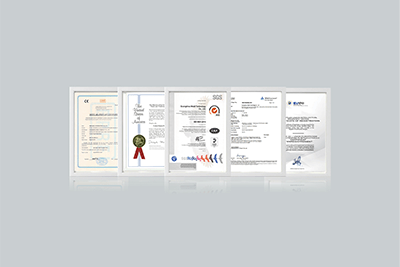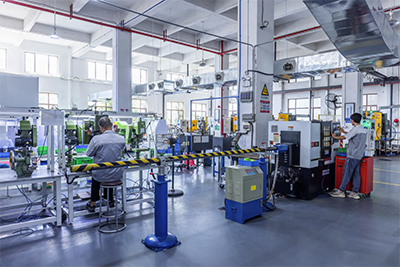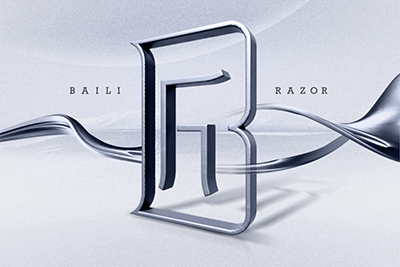An interesting online discussion has recently emerged regarding the price of razors, focusing on the wholesale costs listed on the website of Guangzhou Weidi Technology Co., Ltd. (Brand:Baili). While comparing "sample" prices to typical retail prices (regular and promotional) might at first glance suggest a significant markup, this perspective ignores the complex realities of manufacturing, distribution, and the true value provided by retailers. Let's delve deeper.
Seeing the Whole Picture: More Than Just Unit Cost
It's easy to focus on the difference between the factory price and the sales price. However, this simple comparison overlooks the significant costs involved, beyond the raw material costs, before the product reaches your door:
The Journey from Factory to You: Getting the razors from Guangzhou to stores or your doorstep involves substantial logistics: international shipping, customs duties, import fees, domestic freight, and warehousing. These costs are substantial and are factored into the final price.
Retailer Operations: Your favorite online or brick-and-mortar store isn't operating for free. Their price includes:
Marketing & Advertising: Making you aware of the product.
Website/Store Costs: Platform fees, maintenance, staff.
Customer Service: Handling inquiries, returns, and support.
Payment Processing Fees: Credit card companies charge retailers.
Inventory Risk: Stores buy stock upfront, taking a risk on what sells.
Profit Margin: A reasonable profit allows businesses to survive, innovate, and grow.
Quality Control & Warranty: Reputable retailers often provide an extra layer of quality assurance and handle warranty claims, adding value and peace of mind beyond the factory gate.
The Factory Floor: Precision Isn't Free
The Baili website offers a glimpse into their operations – a dedicated team of around 150 employees handling the entire process from raw materials to finished razors. Manufacturing precision shaving tools, especially manual safety razors, is far more intricate and demanding than many realize:
Engineering & Tolerances: Creating a razor head that provides a consistent, safe, and effective shave requires meticulous engineering and extremely tight manufacturing tolerances. Tiny imperfections drastically affect performance and safety.
Material Costs & Processing: While the final product might seem simple, sourcing suitable metals (like brass or stainless steel alloys), processing them (machining, plating), and ensuring durability add significant cost. The "raw materials to finished goods" claim involves numerous complex steps.
Assembly Complexity: Many Baili razors, particularly butterfly opening razor or adjustable razors, involve small, intricate components-springs, precise hinges, adjustment mechanisms. Assembling these reliably by hand is labor-intensive and requires skill. Imagine the focus needed to assemble hundreds of these tiny mechanisms perfectly every day!
Quality Control: Ensuring every single razor leaving the factory meets safety and performance standards requires rigorous, often manual, inspection processes. Rejecting faulty units adds to the cost of the good ones.
Low Margins, High Volume: Factories like Baili operate on very thin profit margins per unit. Their survival depends on massive order volumes. The listed "sample" price reflects the absolute minimum cost for one unit, ignoring the setup and overhead costs spread across huge production runs. It doesn't represent a sustainable price for typical business.
Custom Manufacturing vs. "One-Click" Drop Shipping: Worlds Apart
Custom OEM Manufacturing vs. Drop Shipping.
Custom OEM (Original Equipment Manufacturing): This is what Baili specializes in for many retailers. A retailer approaches Baili with a specific request. This could involve:
Modifying an existing design (handle length, weight, plating, engraving).
Developing a completely new razor based on the retailer's specifications.
Branding razors with the retailer's logo and packaging. This process involves significant investment from the retailer: design collaboration, tooling setup costs (which can be enormous for metal parts), minimum order quantities (often thousands of units), extensive quality control agreements, and large upfront payments. The factory cost per unit here might be higher than the generic "sample" price due to customization, but the retailer shoulders immense risk and cost before selling a single razor. The final retail price reflects this substantial investment and risk.
Drop Shipping: This is a different model where a seller (often without inventory) lists a generic product. When an order is placed, they buy it from a supplier (like a wholesaler or sometimes even the factory) who ships it directly to the customer. The seller's markup is usually smaller, but they have little control over product quality, branding, or packaging. Individual "sample" prices do not represent a retailer's standard wholesale volume price, especially for custom products.
Appreciating Value, Not Just Cost
Seeing a factory price and a retail price side-by-side tells only a tiny part of the story. The seemingly large "markup" encompasses the entire ecosystem that brings a quality product reliably to your hands. It pays for the retailer's expertise, service, and risk-taking. It contributes to the factory's ability to invest in skilled labor, quality materials, and the complex engineering required to make a precision shaving tool that lasts.
The world of manufacturing and retail is complex. While the base cost of producing a razor at the factory is a starting point, it's far from the whole story. The journey to the consumer, the intricate and costly nature of precision manufacturing (especially for manual razors), the difference between custom OEM and simple drop shipping, and the essential value added by retailers all contribute significantly to the final price. Understanding these layers fosters greater appreciation for the craftsmanship, logistics, and business acumen required to deliver the quality shaving tools we enjoy. Let's focus on the value received for a fair price, rather than an oversimplified view of cost alone.







